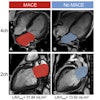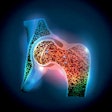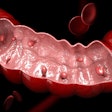Friday, November 30 | 11:50 a.m.-12:00 p.m. | SST14-09 | Room S403B
Researchers will delineate in this presentation how a rib suppression technique may be able to improve the detection of both lung nodules and pneumothorax on portable chest radiographs.While chest radiography is the most commonly used exam for screening and diagnosis of lung disease, bone structures such as ribs and clavicles are major contributors of noise. Suppressing or removing these structures on images can significantly improve signal-to-noise ratio, potentially increasing the detection of two major lung diseases: lung nodules and pneumothorax, said presenter Zhimin Huo, PhD, of Carestream Health.
Advanced technologies such as dual-energy imaging have been developed to remove bone structure; however, these are not applicable to the portable imaging setting in the intensive care unit (ICU) environment, Huo said. She noted that it's important to develop rib suppression technologies for both standard posteroanterior (PA) images and the anteroposterior (AP) images that are acquired for ICU patients.
Rib suppression is more challenging for portable AP chest images because the image quality of ICU chest radiographs is usually lower due to poor patient and apparatus positioning, as well as inconsistent imaging techniques. In addition, portable AP chest images can contain foreign objects such as tubes/line and other hardware, Huo said.
As a result, the group developed technologies that are capable of suppressing ribs and clavicles in both standard PA and portable AP chest radiographic images. Testing showed average rib detection sensitivities of 83% for standard PA and 75% for portable AP chest studies.
"We expect that the use of rib suppression technologies could potentially improve the detection of lung nodules, pneumothorax, and other lung diseases in chest [radiographs]," Huo said.




















